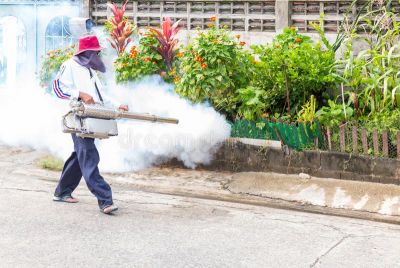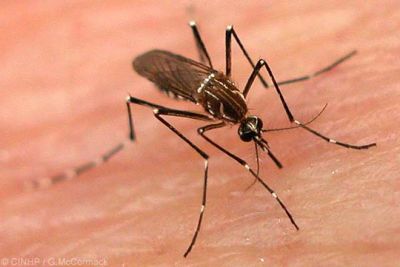Introduction
Chikungunya and Dengue fever are two serious viral infections spread by day-biting mosquitos. The main vectors that spread both diseases are mosquitoes of the genus Aedes .In Mauritius, it is Aedes albopictus which is the
local vector.
local vector.
Dengue Fever and Dengue Haemorrhagic Fever (DF/DHF) were first detected in the 1950s, during dengue epidemics in the Philippines and Thailand. Chikungunya was originally described in Tanzania in 1952.
Chikungunya usually causes a brief illness that is commonly mistaken for dengue fever. Fever, headache, polyarthralgia, myalgia, and rash are some of the symptoms. Although significant consequences are rare, arthralgia is debilitating and can last for months. It is a self-limiting disease occurring primarily in urban and semi-urban environments in tropical and sub-tropical countries around the world. Dengue fever and dengue haemorrhagic fever are the two main kinds of clinical sickness caused by the virus. Dengue fever is characterized by symptoms such as a fast onset of fever, headache, retroorbital pain, severe myalgia, arthralgia, and, in some cases, body rashes. In addition to the symptoms listed above, dengue haemorrhagic fever is linked to bleeding. In some circumstances, this disease may escalate to a deadly condition called dengue shock syndrome. The latter is linked to a high rate of mortality.


Vulnerability of mauritius to chikungunya and dengue fever
Mauritius need a preparedness plan for the prevention and control of chikungunya and dengue fevers because the island is vulnerable to outbreaks of both diseases for the following reasons:
- The vector mosquito, Aedes albopictus, is present in Mauritius and may spread the two viruses.
- In 2005 and 2006, Mauritius experienced Chikungunya and Dengue fever epidemics, respectively.
- Dengue fever is hard to eradicate once it has been introduced to a nation, and it tends to recur on a regular basis.
- If the percentage of infected people in a population is less than 70%, the Chikungunya outbreak is more likely to repeat.
- Mauritius has extensive travel and trade links to dengue and chikungunya
endemic zones. - In many countries, the shipment of used rubber tyres containing dengue virus-infected larvae has been identified as a source.
- The island has multiple high-risk environmental zones that encourage the spread of imported illness viruses in the native mosquito population.
Goal and objectives of the preparedness plan.
The principal goal of the preparedness plan is to decrease morbidity and mortality from chikungunya and dengue.
As a result, during the epidemic phase, the focus is on containment and mitigation, but during the quiescent interepidemic phase, the focus is on early warning through surveillance and control. As a result, the surveillance objectives will vary depending on the phase. The major objectives are to:
1. Provide all stakeholders with a step-by-step strategy to epidemic control.
2. Outline a step-by-step procedure for predicting an outbreak.
3. Outline a step-by-step plan for containing an epidemic before it spreads.
Methods to control chikungunya and Dengue spread
1. Adult control by space spray
For the control of adult vector population the following procedures are used:
1. Space spray operations (thermal fogging or ULV aerosols) must be carried out as soon as possible following the notification of the index case by the CDCU operation team or the regional team.
2. Spraying must be done within a radius of 300 meters of the case house.
1. Space spray operations (thermal fogging or ULV aerosols) must be carried out as soon as possible following the notification of the index case by the CDCU operation team or the regional team.
2. Spraying must be done within a radius of 300 meters of the case house.
3. Some protocols must be followed.
2. Lerval source reduction
The following procedures will be used for larviciding:
1. All houses within 500 meter radius of the case house must be totally surveyed for
Aedes breeding grounds by the PHI.
2. Larval surveys must be carried out within 24 hours of notification of the first case
from an outbreak by Vector Biology and Control Division.
1. All houses within 500 meter radius of the case house must be totally surveyed for
Aedes breeding grounds by the PHI.
2. Larval surveys must be carried out within 24 hours of notification of the first case
from an outbreak by Vector Biology and Control Division.
3. Some protocols must be followed.





